Egypt has long been one of the most fascinating archaeological sites in the world, offering an endless treasure trove of information about ancient civilizations. Recent discoveries in the country continue to excite historians and archaeologists, as they provide new insights into ancient Egyptian culture, religion, and daily life. In this blog, we explore some of the most significant and recent archaeological discoveries in Egypt that have opened new doors to understanding this remarkable civilization.
- Egypt Tour Magic
- Egypt Tour Packages
- Excursions in Egypt
- Cairo Tours and Excursions
- Hurghada Tours and Excursions
- Soma Bay Tours and Excursions
- Makadi Bay Tours and Excursions
- Sahl Hasheesh Tours and Excursions
- El Gouna Tours and Excursions
- Marsa Alam Tours and Excursions
- Port Ghalib Tours and Excursions
- El Quseir Tours and Excursions
- Dendera and Abydos Day Tours
- Aswan Tours and Excursions
- Luxor Tours and Excursions
- Alexandria Tours and Excursions
- Sharm El Sheikh Tours and Excursions
- Top Rated Tours in 2025
- Optional Excursions in Egypt
- Private Transfer
- Blogs About egypt
- Ancient Egypt
- What You Need To know Before Your First Trip To Egypt
- Best Places to Visit in Egypt 2025
- Top Attractions in Red Sea Resorts 2025
- Top 10 Tourist Activities in Egypt
- Top 30 Activities You Can’t Miss in Egypt
- The Guide to Guided Tours in Egypt
- Egypt’s Ancient and Modern History
- The Nile River
- The Deserts of Egypt
- Historical Sites in Egypt
- Cairo
- Alexandria
- Luxor
- Aswan
- The Red Sea
- Dendera Temple
- El Fayoum Oasis
- Bahariya Oasis
- Siwa Oasis
- Al Alamein
- Marsa Matruh
- Ancient Egyptian gods
- famous Egyptian dishes
- UNESCO World Heritage sites
- About Us
- Why Egypt Tour Magic
- Egypt Tour Magic
- Egypt Tour Packages
- Excursions in Egypt
- Cairo Tours and Excursions
- Hurghada Tours and Excursions
- Soma Bay Tours and Excursions
- Makadi Bay Tours and Excursions
- Sahl Hasheesh Tours and Excursions
- El Gouna Tours and Excursions
- Marsa Alam Tours and Excursions
- Port Ghalib Tours and Excursions
- El Quseir Tours and Excursions
- Dendera and Abydos Day Tours
- Aswan Tours and Excursions
- Luxor Tours and Excursions
- Alexandria Tours and Excursions
- Sharm El Sheikh Tours and Excursions
- Top Rated Tours in 2025
- Optional Excursions in Egypt
- Private Transfer
- Blogs About egypt
- Ancient Egypt
- What You Need To know Before Your First Trip To Egypt
- Best Places to Visit in Egypt 2025
- Top Attractions in Red Sea Resorts 2025
- Top 10 Tourist Activities in Egypt
- Top 30 Activities You Can’t Miss in Egypt
- The Guide to Guided Tours in Egypt
- Egypt’s Ancient and Modern History
- The Nile River
- The Deserts of Egypt
- Historical Sites in Egypt
- Cairo
- Alexandria
- Luxor
- Aswan
- The Red Sea
- Dendera Temple
- El Fayoum Oasis
- Bahariya Oasis
- Siwa Oasis
- Al Alamein
- Marsa Matruh
- Ancient Egyptian gods
- famous Egyptian dishes
- UNESCO World Heritage sites
- About Us
- Why Egypt Tour Magic
Recent Archaeological Discoveries in Egypt: A Glimpse into the Ancient Past
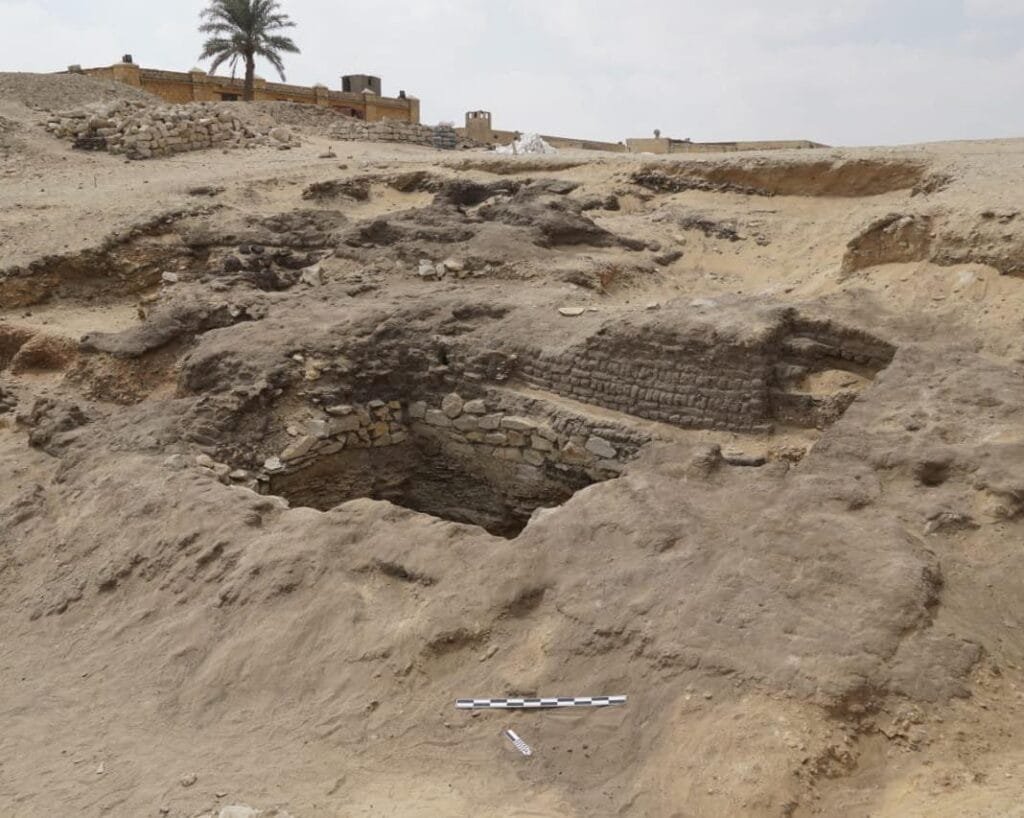
1. Discovery of New Tombs at Saqqara (2025)
In January 2025, an extraordinary series of discoveries was made at the Saqqara necropolis, one of Egypt's most famous archaeological sites. Saqqara, known for the iconic Step Pyramid of Djoser, is a vast burial ground that has provided countless treasures over the years. The latest find included the discovery of several intact tombs dating back to the Old Kingdom period, specifically the Fifth Dynasty (ca. 2465-2323 BCE). Among the most remarkable finds were wooden coffins, some beautifully decorated with vivid hieroglyphic inscriptions. These coffins belonged to high-ranking officials and offer a glimpse into the religious practices and social structure of the time. The inscriptions not only identified the deceased but also depicted scenes from their lives, with gods and other religious symbols, offering insight into the Egyptians' view of the afterlife. The tombs also contained statuettes of the deceased, with some beautifully carved figures representing their families and their roles within society. Vibrant paintings covered the walls of the tombs, many of which were in exceptional condition, depicting daily life, work, and religious rituals. These murals are invaluable for historians studying the customs and beliefs of ancient Egyptians during the Old Kingdom. This discovery at Saqqara is significant because it opens new windows into the life of Egypt's elite during one of its earliest golden ages. The artifacts uncovered offer a rare chance to understand how the ancient Egyptians viewed life, death, and the afterlife, providing scholars with fresh material to examine their cultural, religious, and social practices.
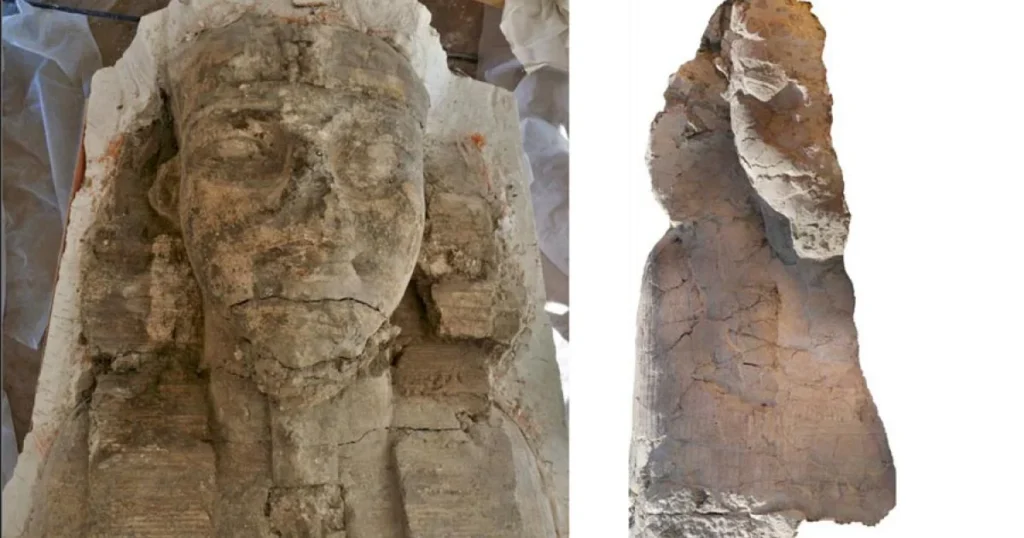
2. Pharaoh Amenhotep III's Treasures Found in Luxor (2025)
In January 2025, the excavation team led by Dr. Zahi Hawass uncovered a treasure trove of royal artifacts from the reign of Amenhotep III in the Luxor region, marking a significant discovery in the heart of ancient Egypt. Amenhotep III, who ruled during the 18th Dynasty, was known for his wealth, diplomacy, and monumental building projects. His reign was one of Egypt’s most prosperous periods, and the discovery of his treasures sheds light on his reign. The excavation revealed several golden statues, including depictions of the pharaoh himself, his family, and various gods. One of the most striking finds was a golden mask intricately designed with divine imagery, likely used in royal burial rituals. The mask’s design included symbols of Amun, Ra, and other gods of the Egyptian pantheon, which were believed to guide the pharaoh's soul to the afterlife. Additionally, the excavation uncovered several jewelry pieces, including golden rings, necklaces, and bracelets, showcasing the advanced metalworking skills of the ancient Egyptians. The jewelry’s craftsmanship revealed intricate designs that were unique to Amenhotep III’s era, highlighting the sophistication of the New Kingdom artisans. This discovery provides new insights into Amenhotep III's wealth and the grandeur of his reign, which was marked by diplomacy and significant international relationships, particularly with the Mitanni and Hittite kingdoms. Furthermore, the discovery of these treasures allows for a better understanding of ancient Egyptian royal burial practices, demonstrating the elaborate rituals meant to secure the pharaoh’s journey into the afterlife.

3. The Lost City of Aten Near Luxor (2020)
In 2020, a stunning archaeological discovery was made near Luxor in the form of a lost city that dates back over 3,000 years. The discovery, named the “Rise of Aten,” is considered one of the most important archaeological findings in Egypt in recent years. This ancient city, which was founded during the reign of Amenhotep III, provides a rare glimpse into the urban life of ancient Egyptians during the New Kingdom. The city, believed to have been used as a administrative and industrial hub, is remarkably well-preserved. The excavation revealed several residential buildings, workshops, and even kitchens, allowing archaeologists to reconstruct the daily lives of the people who lived there. Among the finds were tools, pottery, and personal objects, all of which were well-preserved in the city’s relatively untouched state. The city is thought to have been abandoned after the reign of Amenhotep III and remained hidden under the sands for centuries. The most remarkable aspect of the find was the discovery of wall paintings inside several buildings, some of which depict scenes of royal life and religious rituals. These murals are of immense historical value, providing insights into the artistic practices and cultural beliefs of the time. The discovery of this ancient city sheds new light on the reign of Amenhotep III and offers valuable information about urban planning, daily life, and the political landscape during one of Egypt's most prosperous periods. This find also contributes to the understanding of the Amarna Period that followed Amenhotep III's reign, which was marked by the religious revolution brought on by his son Akhenaten.
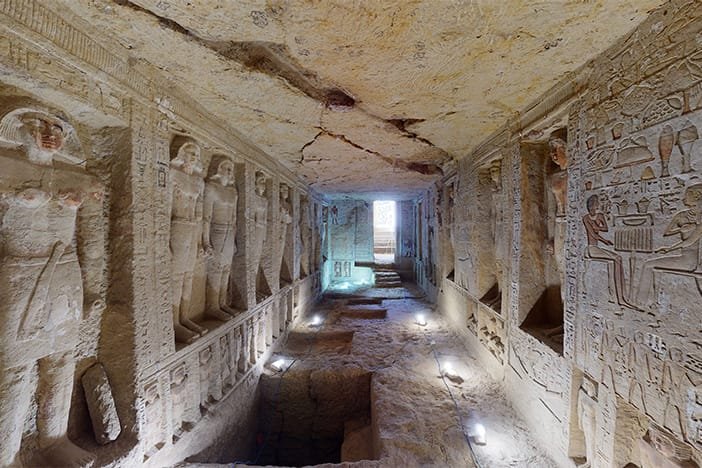
4. The Tomb of Wahtye at Saqqara (2020)
One of the most significant discoveries in 2020 occurred in the Saqqara necropolis when archaeologists uncovered the tomb of an elite official named Wahtye. The tomb, which dates back to the Fifth Dynasty of the Old Kingdom (ca. 2465-2323 BCE), remained remarkably well-preserved after more than 4,000 years. Wahtye’s tomb is unique for its incredible artwork and detailed carvings, providing an extraordinary glimpse into the life of a high-ranking official during the Old Kingdom. The tomb’s walls are adorned with vivid paintings depicting Wahtye, his family, and various deities associated with the afterlife. The hieroglyphic inscriptions inside the tomb provide crucial information about Wahtye’s position in the royal administration, which included a significant role as a priest and overseer of the king’s estates. In addition to the well-preserved tomb paintings, archaeologists found a wealth of funerary items, such as statuettes and wooden coffins, many of which had been untouched for centuries. These items are important because they provide insights into the burial practices of the time, highlighting the belief in an afterlife where the deceased required specific provisions. The discovery of Wahtye’s tomb is significant not only for its artistic and cultural value but also for the wealth of historical information it provides about the administrative and religious systems in Egypt during the Old Kingdom. The tomb’s exceptional preservation makes it one of the most important archaeological discoveries in Saqqara in recent years.
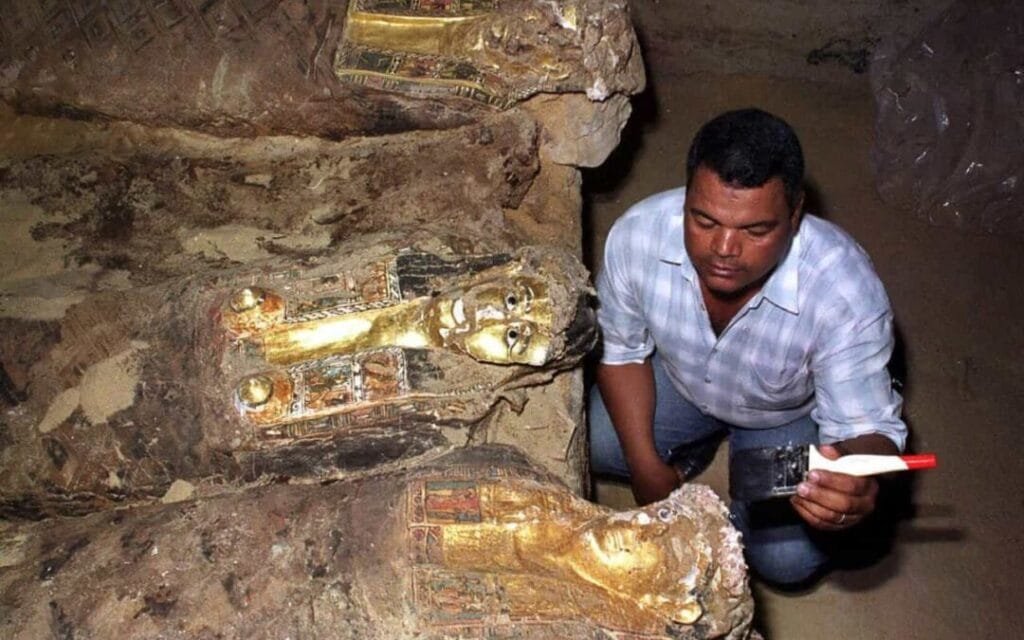
5. The Golden Mummies of the Bahariya Oasis (2022)
In 2022, the Bahariya Oasis, located in Egypt’s Western Desert, revealed a series of golden mummies dating back to the Ptolemaic period (332-30 BCE). The discovery was made in an ancient burial site and included mummies wrapped in golden sheets, a rare and significant find in Egyptology. The mummies are believed to belong to high-ranking officials or royalty, as evidenced by the elaborate gold coverings and the quality of the burial items discovered with them. The golden mummies found in the Bahariya Oasis are unique because they offer a glimpse into the fusion of Egyptian and Greek practices during the Hellenistic period. The use of gold in the mummification process reflects the influence of Greek culture, particularly the Ptolemaic dynasty, which ruled Egypt after Alexander the Great’s conquest. Many of the mummies were found with golden masks depicting the faces of the deceased, which were placed over their heads to ensure protection in the afterlife. In addition to the golden mummies, a variety of funerary goods were uncovered, including jewelry, ceramics, and inscribed papyri. These items provide valuable insight into the burial rituals of the time and highlight the wealth and cultural exchange between Egypt and Greece during the Ptolemaic era. The golden mummies also underscore the high level of craftsmanship and artistry that was achieved during this period. This discovery is significant not only for the wealth of artifacts it uncovered but also for what it reveals about the syncretism between Egyptian and Greek cultures during a pivotal time in Egyptian history.
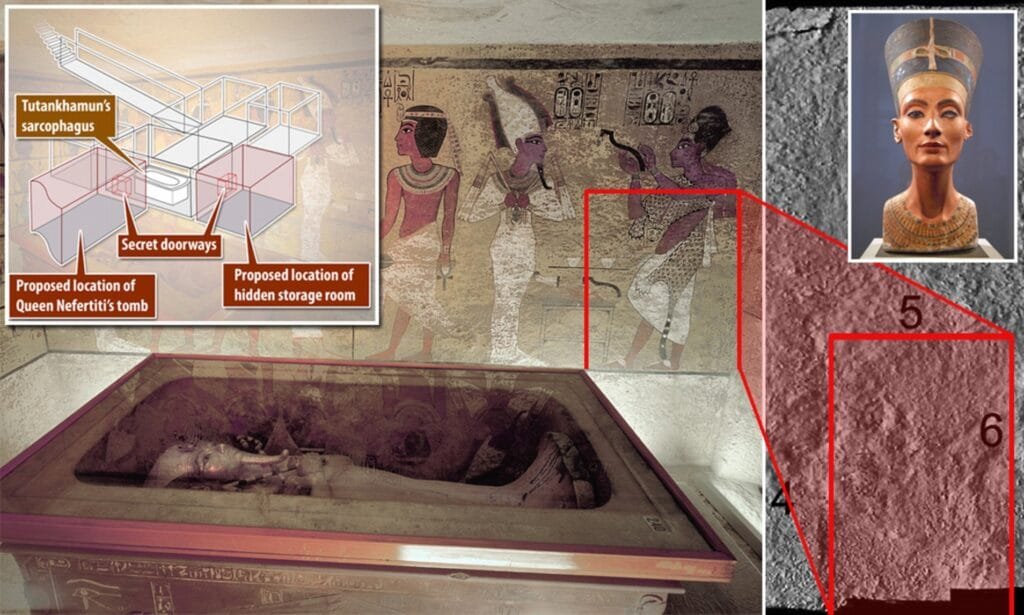
6. The Discovery of Nefertiti’s Hidden Chamber (2025)
In a groundbreaking announcement in 2025, archaeologists revealed the discovery of a hidden chamber in the Valley of the Kings, believed to contain the final resting place of Queen Nefertiti, one of ancient Egypt’s most famous queens. Nefertiti, who ruled alongside her husband Akhenaten during the Amarna Period, was known for her beauty and political influence. Despite extensive searches, her tomb has remained elusive for years, but recent radar scans behind the tomb of Tutankhamun suggest the existence of a hidden chamber. Preliminary findings indicate that the chamber contains painted walls and inscriptions that may confirm the royal identity of the occupant. While the identity of the tomb’s occupant is yet to be definitively proven, many experts believe that it is Nefertiti’s final resting place, which would make this discovery one of the most significant in Egyptology. If confirmed, this find would offer new insights into Nefertiti’s reign, her religious role in the worship of the sun god Aten, and her influence on ancient Egyptian politics. Moreover, the discovery would answer one of Egyptology's greatest mysteries, furthering our understanding of the Amarna period and the shift in Egypt’s religious and political landscapes during her reign.


